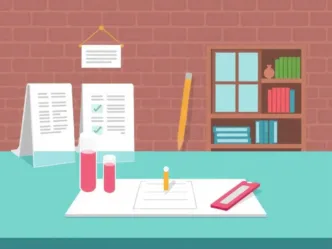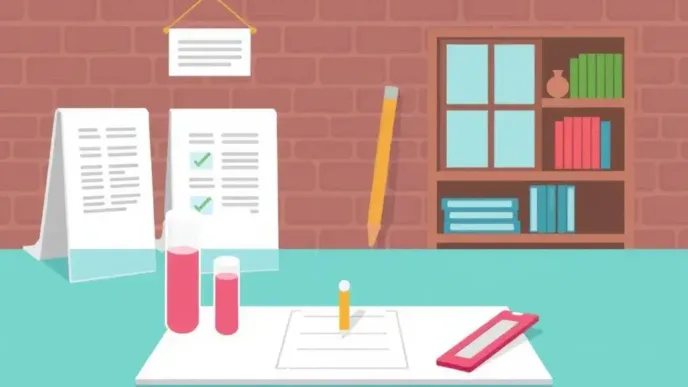The interview in HRM, it is a crucial method in the hiring process, serving as a purposeful conversation that evaluates candidates’ suitability while providing essential information. This article explores key definitions, objectives, effective interviewing principles, interviewer qualities, common techniques, limitations, and measures to enhance interview effectiveness for better personnel selection.
The Core of HRM: The Interview
The interview in HRM, it is considered the central and most useful method in the employment process. It is fundamentally a purposeful conversation. Jucius Michael defines it as a “face to face, oral observational and personal appraisal method.” The primary goals are twofold: to inform the candidate about the job and company, creating a favorable impression, and to assess the candidate’s suitability.
The Selection Interview, or employment interview, is a formal, in-depth conversation aimed at evaluating a candidate’s acceptability for a position. Its strength lies in revealing aspects of an applicant’s personality and fit with the organizational culture that other methods, such as application forms and tests, might not disclose.
Key Definitions of the Interview
- Conversation with a Purpose: A widely accepted general description.
- Scott and Others: “A purposeful exchange of ideas, the answering of questions and communication between two or more persons.” The purposes can be “to get information,” “to give information,” and “to make a friend.”
- Bingham Moore and Gustad: A conversation “directed to definite purpose other than satisfaction in the conversation itself,” involving verbal and non-verbal communication (gestures, postures, expressions) to facilitate a purposeful exchange of meanings.
- Overall Goal: An attempt to secure the maximum amount of information regarding the candidate’s suitability for the job under consideration.
Main Objectives of the Interview in Personnel Selection
The interview in HRM serves several vital functions in the selection process:
- Applicant Evaluation: To judge an applicant’s qualifications, characteristics (family background, training, education, personality, aptitude, interests, and skills) for sound selection and placement.
- Information Provision: To give the applicant essential facts about the job and the company (e.g., work hours, benefits, company policies) so they can make an informed decision on accepting the employment.
- Building Rapport: To establish a mutual understanding and confidence between the company and the applicant.
- Promoting Goodwill: To generate a positive impression of the company, regardless of whether the applicant is hired, through courtesy and constructive engagement.
- Gauging Intangibles: To get a “real feel” of the candidate, observing their appearance, mannerisms, confidence, and typical reactions to questions.
- Addressing ‘Will Do’ Factors: The interview is crucial for assessing motivation, initiative, stability, perseverance, and judgment—aspects that tests often cannot measure.
- Screening Tool: It offers an opportunity to “size up” the candidate, pursue detailed questioning, and assess subjective aspects (facial expression, nervousness, enthusiasm, intelligence).
Principles for Effective Interviewing
Successful interviewing follows established principles to ensure a good match between the person and the job requirements:
- Use Expert Interviewers: Interviewers must be skilled, experienced, trained, and familiar with the job requirements and the organization’s background. Knowledge of Behavioral Science is beneficial for judging personality traits.
- Ensure Privacy and Time: Conduct the interview in a private setting, free from distractions, and allow ample time for the conversation.
- Proper Reception: Warmly welcome and treat all interviewees nicely to create a favorable impression.
- Promote Comfort and Ease: Create a relaxed atmosphere so the interviewee feels willing to share facts about themselves.
- Use Skilful Questions: Ask questions in simple, clear language. Avoid arguing, interrupting, changing the subject abruptly, or asking leading/tricky questions. Ask direct and personal questions tactfully.
- Avoid “Overselling”: Do not disclose the organization’s urgent need for the candidate’s services. The interviewer should aim to impress the candidate so they willingly accept the job, preventing a feeling that the candidate is obliging the organization.
- Be Courteous: Adopt a courteous approach to help the candidate feel at home and speak freely.
- Encourage Candidate Talk: Give the candidate the maximum opportunity to talk. The best interviews are those where the interviewer talks the least.
- Attentive Listening: Listen patiently and attentively, avoiding imposing personal opinions or beliefs.
- Ensure Objectivity: Rely on objectivity rather than personal bias, prejudice, or whims. Employ a scientific process for evaluation.
- Close Appropriately: Conclude the interview once sufficient information has been gathered, thanking the candidate for their interest.
- Rational Selection: The interview committee’s final decision must be rational, based on the candidate’s performance and collected information, with the outcome promptly and clearly conveyed.
Qualities of a Successful Interviewer
An effective interviewer should possess:
- Maturity and Experience: Often an older people person (e.g., above 40-45) with a mature outlook.
- Social Detachment: A quality that aids in making more accurate judgments of others.
- Emotional Stability: Slightly above-average intelligence, emotional maturity, well-adjusted life, and interest in human behavior.
- Empathy and Rapport: A genuine feeling of warmth and affection to quickly establish rapport, even with nervous individuals.
- Training and Self-Refinement: Fully trained in the art of interviewing, aware of the method’s weaknesses, and continually refining their technique based on experience.
- Knowledge Base: Thorough understanding of the organization, job requirements, employment policies, relevant legislation, and human traits (personality dynamics, motivation, abilities, attitudes).
- Receptiveness: Sensitive to how their behavior affects others.
Most Common Interviewing Techniques
- Preliminary (Screening) Interview: A brief, mutual information-sharing session to decide if a comprehensive interview is warranted.
- Patterned (Structured) Interview: Uses a set of pre-structured questions, often in conjunction with the application blank, leading to more standardized and accurate results.
- Non-Directive (Unstructured) Interview: Minimizes direct questions, instead using broad, general questions to encourage the applicant to talk freely and reveal their true personality.
- Stress Interview: A deliberate attempt to create pressure and tension to observe the applicant’s performance and emotional balance under stress, useful for jobs where composure is key.
- Depth Interview: A time-consuming process aimed at gathering total information to develop a comprehensive, in-depth profile of the applicant’s personality.
- Group Interview: A group of applicants is assigned a discussion topic, and observers evaluate their performance, focusing on leadership emergence and group interaction.
- Panel or Board Interview: Candidates are interviewed by a group of experts specializing in different disciplines, leveraging collective judgment and wisdom, typically used for supervisory and managerial positions.
Limitations of the Interview
Interviews in HRM, if not conducted effectively, can undermine the entire selection process. The major limitations stem from ineffective process design and common psychological errors in evaluation.
Ineffective Interview Process
- Failure to establish rapport with the interviewee.
- Interviewers lacking the proper skills and aptitude.
- Lack of advance planning, leading to floundering.
- Poorly framed questions that are irrelevant or confusing.
- Asking an excessive number of questions disproportionate to the time available.
Common Errors in Evaluation
These errors occur due to psychological processes influencing the interviewers:
- Impression Management: The candidate influences evaluation by projecting a desired image (first impression), which may unduly affect the interview outcome.
- Halo Effect: Judging all of an interviewee’s traits based on a single, perceived positive or negative trait. This is more pronounced when traits are unclear, infrequently used, or have moral implications.
- Stereotyping: Judging a candidate based on the assumed characteristics of the group they belong to (e.g., schooling, background, caste).
- Projection: The interviewer expects their own qualities, skills, and traits in the interviewee, resulting in higher ratings for those who possess them, regardless of the job’s actual requirements.
Measures to Enhance Interview Effectiveness
To maximize the interview’s contribution to selection, deliberate measures must be taken:
- Immediate Evaluation: The interviewer should grade or make remarks about the candidate immediately after the interview while the information is fresh, facilitating a comparative evaluation of all candidates.
- Proper Planning: Determine who conducts the interview, the methodology, the evaluation basis, and the weightage of the interview in the total selection process.
- Optimal Setting: Ensure both a physically comfortable and disturbance-free environment and a mental setting that fosters rapport. The interview should not begin until the candidate has overcome their initial nervousness.
- Solicit and Provide Information: Once the candidate is at ease, the interviewer should tactfully obtain necessary information and answer the candidate’s questions, demonstrating respect and careful listening.
- Courteous Closing: Conclude the interview with pleasant remarks and thanks, offering a positive impression of the organization.














Leave a Reply